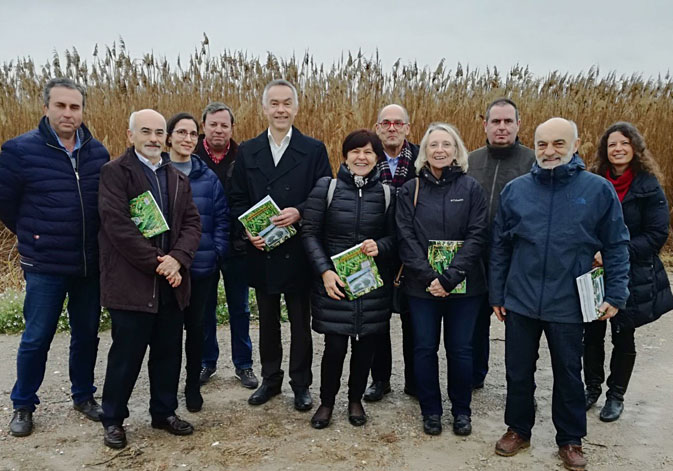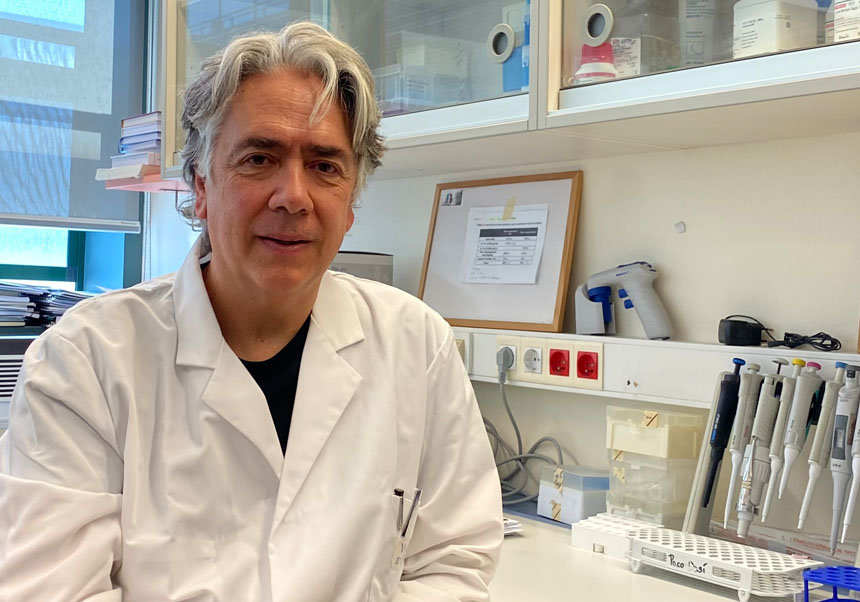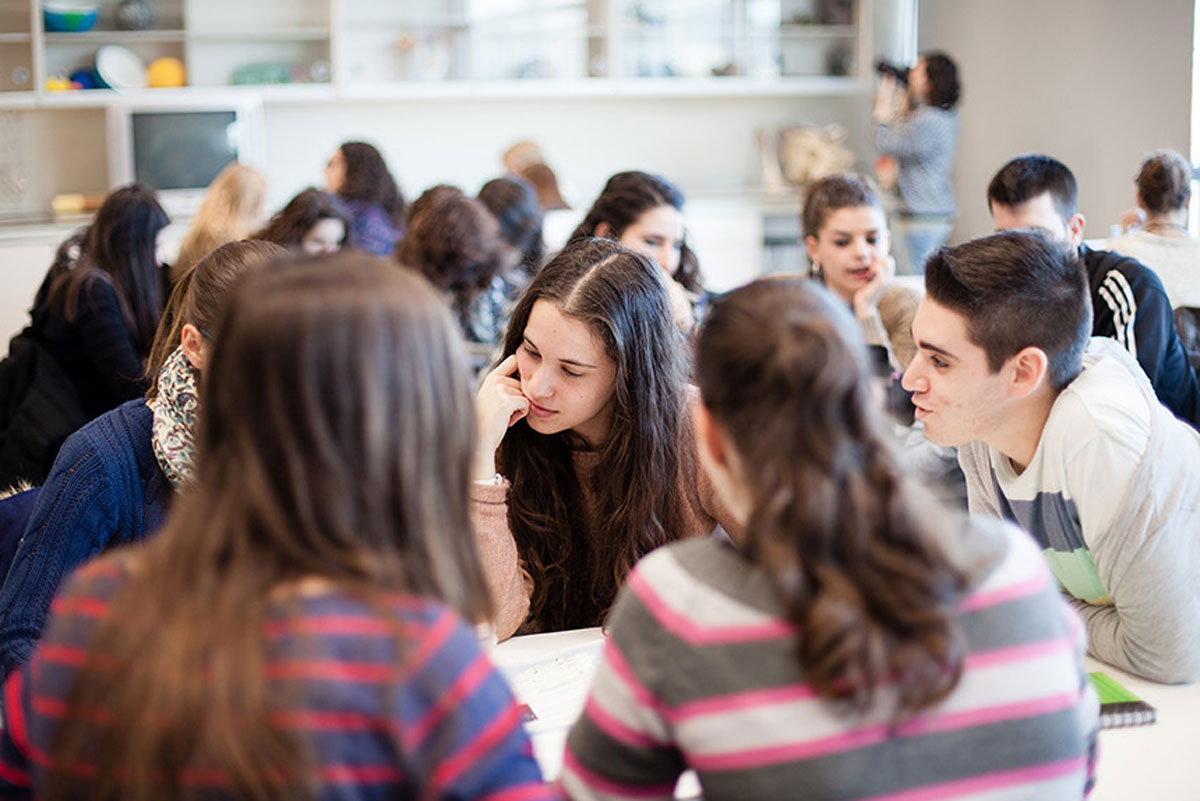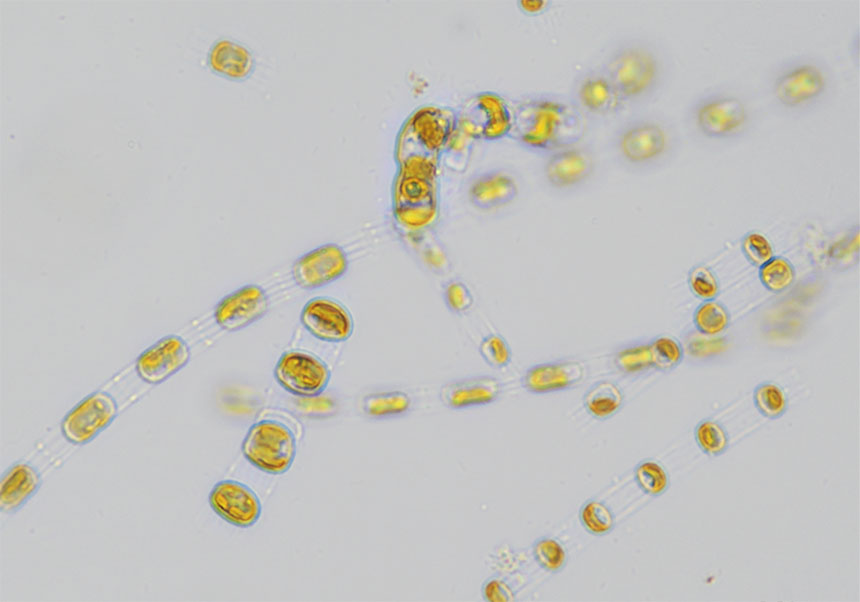Proposal of changes in the European regulations approach to boost the circular economy in the wastewater treatment
- Scientific Culture and Innovation Unit
- June 28th, 2019

The CALAGUA UV-UPV Mixed Research Unit, coordinated by Aurora Seco, Professor of Environmental Technologies at the University of Valencia, has identified the existence of legal barriers that hinder innovation in the field of water treatment. These barriers prevent taking advantage of the resources present in the water (nutrients or energy, among others) in line with the principles of the Circular Economy and the Sustainable Development Goals of the United Nations.
Among the proposed measures is the combined application of anaerobic membrane technology with fertirrigation (agricultural use of the treated water together with the nutrients present in them). This would require the introduction of a new public or private agent, the Regenerated Water Manager, who would supply water suitable for agriculture with the flow and the quality needed at all times.
The initiative is part of the Innovation Deal for Circular Economy (ID) program of the Directorate General for Research and Innovation of the European Commission (DG RTD), and seeks to connect different stakeholders of a specific sector to study and propose solutions to the barriers of the different European, national and regional regulations to innovation.
In particular, this ID has proposed the improvement of the sustainability of wastewater treatments through the technology of anaerobic membrane bioreactors (AnMBR). The water obtained through this technology would be suitable for irrigation due to its high microbiological quality and could have a positive impact on the conservation of water resources in regions with shortages in southern Europe.
The Valencian team, together with other European agents, has prepared a report delivered in May 2019 in Brussels, which includes the proposed solutions. Among the regulatory barriers is the Council Directive 91/271 / EEC, on the treatment of urban wastewater, which establishes the need to eliminate nutrients in all WWTPs whose discharges are carried out in areas classified as sensitive regardless of their later use. As a consequence, in sensitive areas it will be necessary to eliminate the nutrients in the treatment plant (with the consequent energy and reagent consumption), nutrients that must then be added in the form of chemical fertilisers if the water is reused for agricultural irrigation.
In addition, there has also been a lack of recognition of the environmental and economic benefits of the treatment for new uses, especially in agriculture. The team coordinated by Aurora Seco also highlights the need for a clear methodology for the evaluation and management of risks in water reuse projects.
Among the tasks that the consortium has developed is the study of different cases of water treatment and reuse under different scenarios. In all of them it was observed that the application of the AnMBR technology combined with fertirrigation meant both an economic saving and lower environmental impacts (reduction in the discharge of nutrients to the natural environment and reduction of greenhouse gas emissions).
In order to deepen the quantification of the mentioned advantages, it is recommended to carry out pilot projects that demonstrate the technical, economic and environmental feasibility of the proposal. In addition, the necessary cooperation between the different agents involved in the management of water resources and the treatment of wastewater and farmers is highlighted. An adequate coordination will ensure not only the obtaining of economic benefits, but a high protection of health and the environment.
Finally, the consortium proposes the preparation of a European guide on risk management plans that could be used by all stakeholders in the sector.
Consortium
The consortium is led by the CALAGUA UV-UPV Mixed Research Unit, formed by researchers from the Department of Chemical Engineering of the University of Valencia and the Institute of Water and Environmental Engineering of the Polytechnic University of Valencia.
This consortium also includes technical staff from the Directorate General for Research and Innovation (DG RTD), the Directorate General for Agriculture and Rural Development (DG AGRI) and the Directorate General for the Environment (DG ENV) of the European Commission, together with different national and regional public authorities such as the Júcar Hydrographic Confederation, Águas de Portugal, The Energy and Water Agency (Malta), the Ministry of Agriculture, Environment, Climate Change and Rural Development of the Valencian Government and the Public Entity of Wastewater Sanitation (EPSAR).
Also part of the consortium are Spanish and Portuguese universities (University of Valencia, Polytechnic University of Valencia, New University of Lisbon), French research centres (the European Institute of Membranes and the Laboratory of Environmental Biotechnology of INRA), the consortium of the H2020 SMART Plant project, the company ECOFILAE and the irrigation community of the Irrigation Canal of the Turia River, the latter as final users of reclaimed water.
Anaerobic membrane technology
The AnMBR technology contributes to reduce the environmental impact within the field of wastewater treatment, since it presents a better energy balance due to the valorisation of organic matter through the production of methane. This gas can be used to produce electricity and heat, and it allows to minimise the CO2 emissions associated with the purification. Another advantage of this technology is its lower production of sludge compared to other conventional treatments, such as activated sludge. Finally, the use of membranes allows the design of more compact plants, which is also advantageous, especially in the case of expanding the treatment capacity of existing treatment plants when there is no space available.
Currently, treatments for drinking water and wastewater account for 7.6% of total energy consumption in the European Union. Therefore, saving energy and improving efficiency within the sector would have a significant positive impact on total energy consumption. In addition, the combination of wastewater treatment using AnMBR technology and fertirrigation (irrigation with the regenerated water and the nutrients it contains) contribute to alleviate problems of water scarcity, to provide stability in food production and to increase yield economic growth of crops by reducing the needs for the addition of mineral fertilisers.
This treatment and reuse strategy also has additional economic, social and environmental benefits linked to the increase in water availability: maintenance of economic activity in rural areas and conservation of ecosystems associated with agricultural practices.
















